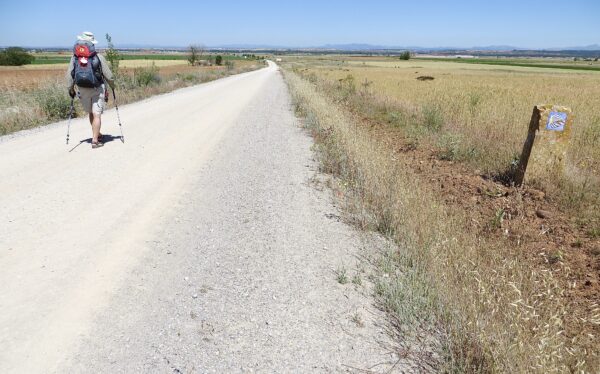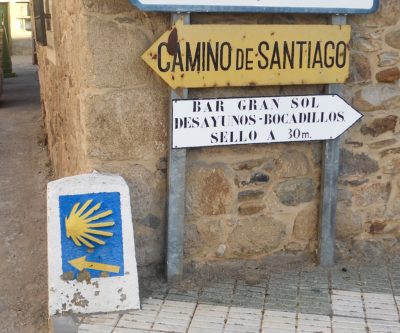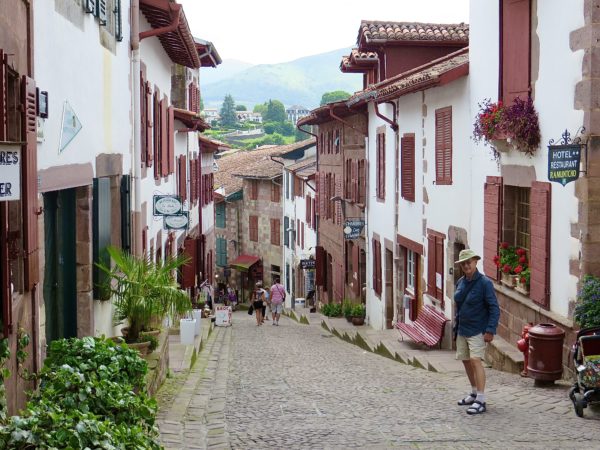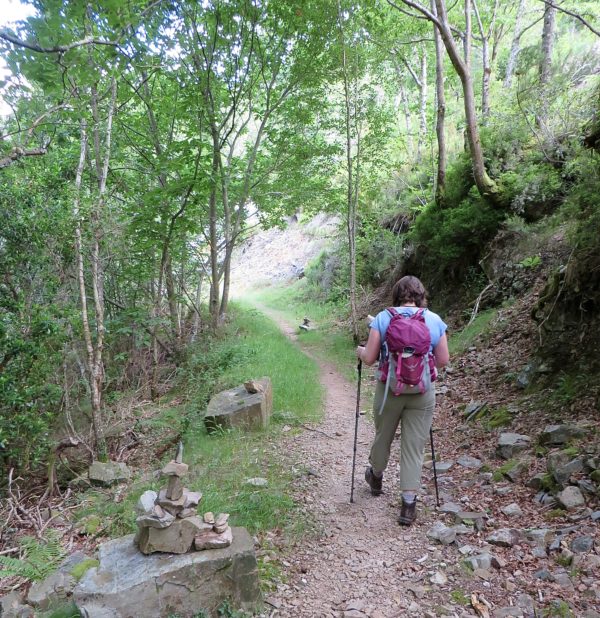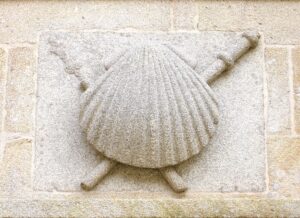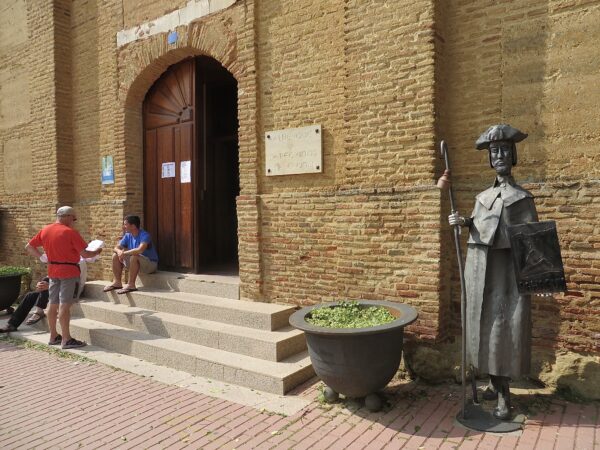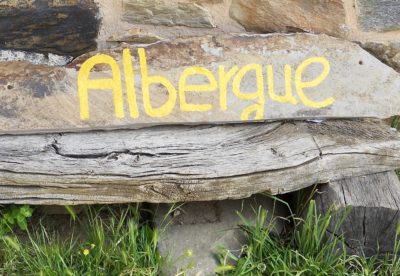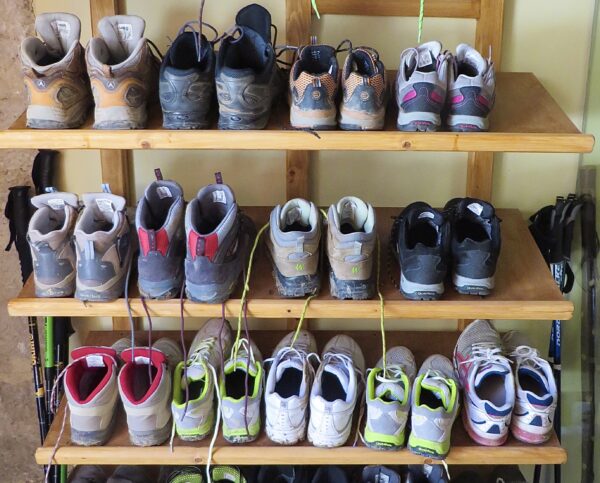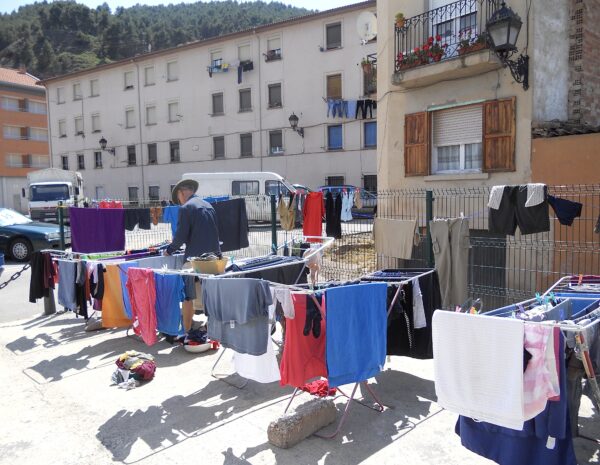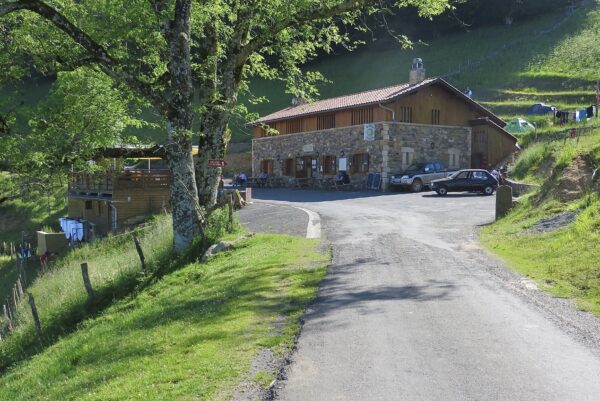Camino Resources: Planning a Camino walk, Part 1
Walking the Camino typically involves special preparation and planning to get ready. The ‘preparation journey‘ can include physical conditioning, putting gear together, and arranging travel reservations. Check out guidebooks, apps, & information websites to become familiar with the trail, its history, & infrastructure (lodging, etc.). Additionally, Camino narratives give insight about the walking experience (see Camino Books, Films, Etc.).
Planning for a Camino generally takes a while — from months to a year to even longer. The amount differs for each person. Work/personal schedules, fitness levels, & travel skills are some factors that determine how much time will be needed to prepare. Below are resources & information to help start the journey.
Common ‘how, what, & where’ questions in planning a Camino:
What route do you want to walk?
Many first time walkers choose Camino Frances, which is the main ‘artery’ for multiple Camino trails. It has the most developed infrastructure & is steeped in pilgrimage history. Also, on this route there likely will be a larger community of walkers, including English speakers, to connect with for friendship or assistance if needed. In general, Camino ‘veterans’ often choose the ‘quieter’ routes where previous trekking/traveling experience and Spanish language skills are helpful. Note that although fluency in Spanish isn’t required for the Camino, it’s valuable to know some basic words & phrases when visiting Spain.
In recent years the Camino Portuguese routes have become the second most popular behind the Frances. For info about these check out the Confraternity of St. James and Gronze.com. Blog posts about walking from Porto to Santiago begin with Camino Portuguese, Part 1 on Pilgrim Pouch Peregrinations.
Where will your starting point be?
For Camino Frances, a traditional starting point is St. Jean Pied de Port, a town just over the French border in the Pyrenees. Other common beginning places for the Frances include Roncevalles, Pamplona, Burgos, Leon, & Sarria. However, it’s your unique journey and choice of where to begin.
Sarria is the most popular starting point for Camino Frances because of its location, 113 kilometers (73 miles) from Santiago. This distance fulfills the mileage required (100 kilometers or 62 miles) in order to receive a Compostela. Thus, the busiest section of Camino Frances is usually from Sarria to Santiago. For Camino Portuguese, the most popular starting points are Porto and Tui (in Spain), which fulfills the distance needed for a Compostela.
How long does it take to walk to Santiago?
It generally takes 5 or more days to walk to Santiago from Sarria on Camino Frances, depending on miles walked each day. From St. Jean (2nd most popular beginning point for the Frances) it takes about 4-6+ weeks to walk 500 miles across Spain to reach Santiago. For Camino Portuguese from Porto, it typically takes 12+ days to walk around 160 miles; from Tui 6+ days to walk 74 miles.
For other starting points on the Frances/Portuguese, use guidebooks/apps to calculate walking times based on the distance to Santiago & how many miles you plan to walk daily (see below). Allow ‘wiggle room’ for any ‘rest days’ and days walking fewer miles.
The Camino is also walked by segments. Some people walk for a week or two or more, then continue where they left off at a later date. This may be a good option when you have limited travel time or are unable to complete the whole route in one trek.
How many miles are walked per day?
It’s your choice for each day’s mileage, keeping in mind the distances between available lodging. On average, walkers cover 10-15+ miles a day depending on the route and topography. Of course, some people walk more miles, some walk fewer, and each day’s total may vary. Also, although guidebooks organize routes into segments, you don’t necessarily have to walk the amount of daily miles they indicate. Walk what you feel comfortable with doing, whether that’s 7 or 17 miles — everybody has a different pace & travel schedule.
What time of year is best to go?
The ‘pilgrim season’ is generally April-October, and in 2023 the most popular months were May, August, & September. However, there are walkers even in January! When making plans, consider average monthly temperatures, weather patterns, & what time of the year works best for you. Take note that Northern Spain can be rainy and cooler than southern regions of Spain, whereas the Meseta plateau (one region of the Frances) can be hot during the summer.
What types of surfaces will be walked on?
Camino routes include a variety of trail surfaces. They may be dirt paths, leafy lanes, asphalt pavement, cobblestoned streets, medieval stone bridges, or even ancient Roman roads. In a single day’s walk, you’ll likely encounter all different kinds. Some guidebooks describe the types of trail surfaces found on each segment of the Road. Your feet will become very sensitive to what’s ‘underfoot,’ so comfortable boots/walking shoes are a vital part of your gear (see Camino Packing for gear info).
Cobblestoned Rue de Citadelle in St. Jean Pied de Port, a traditional starting point for Camino Frances
Walking preparation:
Besides organizing your travel itinerary, an important part of planning a Camino is getting into walking shape. Although you don’t have to be an athlete to walk the Camino, you do need to be physically prepared, otherwise strains/injuries may occur. It’s recommended to first get your doctor’s OK to avoid any medical concerns, especially if you have a physical condition that requires special care.
Training suggestions:
- Plan on at least 3-6+ months to prepare, depending on your present physical activity level and projected daily distances you’ll be walking while on the Camino. Someone who regularly walks/hikes will have a different training routine to start with than someone who is new to taking walks.
- Consider getting training advice from a physical therapist/personal trainer/health care professional even if you have a regular fitness routine. They can help guide you to prevent strains/injuries and avoid ‘over-training’ that may result in pre-Camino injuries.
- To ease into Camino preparation and avoid strains try taking two shorter walks in a day rather than one longer walk. A short walk in the morning & a short walk later helps build strength & endurance.
While on the Camino:
- Consider easing into your journey by walking fewer miles the first few days or more to prevent strains/injuries. Allow your body time to adjust to the Camino walking routine before choosing to trek longer daily distances.
- It’s important to walk your own pace: avoid trying to keep up with faster walkers, which may cause strains/injuries — remember it’s not a race!
- Listen to your body — it could be telling you to take a rest day or seek medical attention if you’re not feeling well or experienced a strain/injury. Also, consider scheduling rest days as part of your walking itinerary to refresh & give feet & legs a break. Walkers often ‘rest’ in larger towns where they sightsee & get supplies.
Walking sticks help to take pressure off feet/legs and keep your balance on uneven surfaces.
Camino guides:
- Pilgrim’s Guide to the Camino de Santiago by John Brierley — popular guides for English speakers; available on Brierley’s website, Amazon, bookstores, etc.; Kindle version available
- A Village to Village Guide to Hiking the Camino de Santiago by Anna Dintaman & David Landis — available on Amazon, etc.; Kindle version available
- Gronze.com — online guide with route & lodging info (in Spanish but use Google translator for English)
- The Confraternity of St. James — based in England; guidebooks & info on various routes
- Wise Pilgrim — guidebooks & apps for various routes
- Camino de Santiago: Sacred Sites, Historic Villages, Local Food & Wine by Beebe Bahrami — focused on cultural & historical information by writer & anthropologist Bahrami; available on Amazon, etc.
- Cicerone — based in England; guidebooks for the Camino and other pilgrimage routes & walking trails; includes cycling guide for Camino Frances; available on Amazon & The Confraternity of St. James.
- Godesalco.com — route elevation maps & mileage calculator
- Pilgrimage Publications — “Lightfoot Guides” to the Camino & other pilgrimage routes, including Via Podiensis in France; available on Amazon, etc.
- Miam Miam Dodo — guidebooks for routes in France; in French but maps are easily understandable. Books are also available on Amazon or from The Confraternity of St. James.
- Also see Eroski Consumer & Mundicamino under “Camino information websites” listed below.
Camino apps:
- Wise Pilgrim — apps & hard copy guides; apps include offline maps
- Buen Camino (link to info on Apple)
- FarOut Guides (formerly Guthook) — GPS offline maps of Camino Frances & Camino del Norte
- Organic Maps — offline navigation maps
Camino forum:
- Camino de Santiago Forum — excellent for information & the latest trail news; created & run by Ivar Rekve who lives in Santiago.
- Ivar’s online store Casa Ivar includes Camino guides, credencials, & merchandise.
- He also offers gear/luggage storage at his office, which is handy for sending ahead gear not needed.
- 2 new services include shipping gear/”Camino things” home and also luggage pick-up to Santiago from anywhere in Spain, Portugal, or France; details explained here.
- Check out Ivar’s You Tube videos with pilgrim interviews, Camino updates, & more.
Camino organizations/resources:
- Pilgrim’s Office (in Santiago) — place where walkers receive their Compostelas; train & bus tickets can be bought here; website includes Camino info & walker statistics.
- American Pilgrims on the Camino — national association with regional chapters; can request pilgrim credencials through them.
- The Confraternity of St. James (in England) — info & guides of Camino/pilgrimage routes in Spain, France, etc.; includes a tribute to John Brierley
- Pilgrim House (in Santiago) — welcome center for walkers; offers services including wifi, laundry, copy machine, etc.; also hosts sessions for pilgrims to reflect on their journeys.
- Pilgrim (in Santiago) — backpack storage, bike rentals, laundry service, tours, info on various routes, etc.
- Fundacion Jacobea (in Santiago) — info about the Camino’s history, routes, and the city of Santiago; articles about books, organizations, etc. related to the Camino
- Peaceable Projects — Camino organization run by U.S. author Rebekah Scott who lives in Moratinos, Spain.
- El Camino People — Camino Consulting firm based in Pamplona that offers guide services, tours, etc.; podcast with “pilgrim stories.”
Camino information websites:
- Eroski Consumer — Spanish website with route & lodging info (for English use Google translator).
- Mundicamino — Spanish website (English translation) with info about routes, bike rentals, etc.
- CaminoFacil — Spanish website (English translation) with info about route & backpack transport
- Planet Janet Travels — travel blogger/Camino walker Janet Hanpeter gives info & tips about planning a walk.
- Follow the Yellow Shell — Camino walker Mark Stevens gives route info, resources, & a packing list; also includes info for walking trails in the UK.
- The Spirit of the Camino — info, photos, & a blog about various Camino routes by Australian journalist Nick Leonard; Nick & his wife Wendy Werneth also co-host a podcast about their walks.
- Google Arts & Culture “Buen Camino” — info site in collaboration with Camino organizations, including the Xunta de Galicia (regional government of Galicia)
- Camino de Santiago — shows photos of various routes; has tips & links to other resources.
- Camino Adventures — info about routes & planning a Camino
St. James greets walkers at Albergue de Peregrinos Cluny in Sahagun, the halfway point of Camino Frances.
Camino lodging:
- Albergues — Pilgrim hostels are called albergues (“shelter” in Spanish) — they’re also known as “refuges,” “refugios,” and in France, “gîtes d’étapes” (or just “gîtes”). Depending on the type & size of the facility, albergues accommodate anywhere from small groups to 100+ walkers.
- Different kinds of albergues — These include: municipal albergues run by regional Camino associations, private albergues managed by individuals, and paroquial albergues run by monasteries or religious organizations.
- Albergue cost — The typical price range is from 5-15+ Euros for a night; municipal/paroquial facilities are usually the cheapest. “Donativo” albergues (where you pay what you can) are rarer these days — if staying at one of these, remember that they often depend on pilgrims’ donations to operate, so please pay if possible.
- Other lodging options — Besides albergues (only for pilgrims) other lodging possibilities include hostels, hotels, B&Bs (casas rurales in Spain & quintas in Portugal), and paradors. Paradors are high class hotels run by the Spanish government and often located in historic buildings; check for discounted ‘pilgrim rates.’ ** Because of COVID concerns, some walkers prefer staying at lodging with private rooms & bathrooms rather than at communal albergues. **
- Lodging reservations — Reservations aren’t possible at municipal albergues, which are “first come, first serve.” Reservations can be made at most private albergues, hostels, etc. (via phone, email/website, or booking sites).
- Camino Frances lodging/reservations — Everyone has their own preferences regarding lodging and whether to make reservations or not, so do what’s best for you. If you’ll be walking for weeks, you might consider making reservations in advance for the first 3+ days, depending on where you’ll start & what type of lodging you choose. After a couple days of walking, you’ll find your pace and can better gauge daily distances and where stops will be. Further reservations then could be made if you choose — 1-3+ days ahead is generally enough time, depending on location & season of the year. During busier months consider booking more lodging to avoid concerns about finding a bed, particularly for the popular last 100k from Sarria to Santiago.
- No reservations — Some walkers prefer to make no lodging plans & rely on finding a bed/room after they arrive to town, especially if they’re staying at municipal/donativo albergues where reservations can’t be made. Also, if you arrive early to the day’s destination, there’s a chance that lodging will be available.
More lodging info:
- ‘Hybrid’ lodging plans — A common lodging plan is to make reservations for some nights & then leave others open, particularly if choices include municipal/donativo albergues. Also, if you’re walking for weeks and book in advance for every night, there’s no ‘wiggle room’ for changes that may occur (such as taking a rest day, altering your pace, meeting walking partners you want to share lodging with, etc.). Keep in mind that reservations typically can be cancelled if you change plans. Always check cancellation policies before booking.
- **Albergue ‘rules’** — In general, walkers are allowed to stay for 1 night only, but there are exceptions to this rule (for medical reasons, etc.). At night the lights are turned off at 10:00 p.m.; in the morning pilgrims usually need to leave by 8:00 a.m., which allows time for the albergue to get ready for the next group of walkers. This rule can vary, though, particularly at municipal albergues in larger cities or on routes with fewer walkers.
- **Albergue precautions** — If you don’t have a private room/bathroom, it’s advised to take your valuables (money belt, phone, etc.) with you when showering because there have been occasional reports of theft. There are usually shower hooks to hang plastic bags. Also, consider wearing your money belt (with passport, major money, copies of documents, etc.) while sleeping. Some walkers put valuables in their sleeping bag/liner or inside the pillow case for safekeeping during the night.
- Albergue bunkbeds — Most albergues provide only bunkbeds; there may be single beds in private rooms if available. Generally, private albergues are more likely to include single beds than at municipal facilities.
- Albergue bathrooms — Almost all albergues have restroom/shower facilities — exceptions are the few albergues with no electricity/showers. Guidebooks will indicate these ‘rustic’ places, which could be a unique ‘medieval’ experience. Some albergues offer separate facilities for women & men, while others offer unisex bathrooms with separate shower/toilet stalls. Toiletry items (soap, shampoo, hand sanitizer, etc.) aren’t usually provided, so it’s important to bring your own.
Even more lodging info:
- Mix it up — If primarily lodging at albergues, you may want to take occasional breaks with stays at hostels, hotels, casa rurales, etc.
- Santiago lodging — If your journey’s end point will be Santiago and you have an arrival date planned, consider making reservations there in advance. During busier months lodging availability can be tight. Make sure to check out cancellation policies before booking in case your plans change.
- Santiago’s big albergue — If you don’t have reservations in Santiago after arriving, one albergue possibility is Seminario Menor, a seminary/school built in 1953. The building complex has multiple floors, private rooms available, single beds (rather than bunkbeds), lockers, laundry, and a kitchen & mercado in the basement. Although it’s a climb up a hill to reach the building, there are great views of the city out the windows. The rooms could be stuffy on hot days, however (no air conditioning).
- Camping — If interested in this option, first find out the availability of ‘official’ campsites in the areas where you’ll be walking. Camping on public property is generally illegal but may be possible depending on the route & whether it’s done quietly. On private property permission should be granted by the landowner. Before choosing this option, consider the extra gear weight that will be carried. For more information check out the Camino de Santiago Forum.
- Bed ‘linens’ — Most albergues provide disposable paper/cloth type mattress & pillow covers for your bed. Blankets are usually available too. For bedding, walkers typically bring a sleeping bag/throw and a sleeping bag “liner” (similar to a sheet). Although some walkers go without a liner, this item will be much easier to periodically wash than a sleeping bag. In warmer months, consider bringing just a liner or liner plus a throw.
- Hospitaleros — Volunteers (“hospitaleros”) help manage municipal albergues and those run by Camino associations. In order to be a hospitalero, you’ll need to have walked a Camino (at least 100 km) & typically receive training through a Camino association. Further info is on American Pilgrims on the Camino. Volunteers are also needed at the Pilgrim Offices in St. Jean Pied de Port & Santiago.
- Boots & sticks — Some albergues have racks/containers to put walking sticks & boots. If you’re concerned about other walkers mistaking your shoes for theirs, try tying your laces together or take out insoles.
- Bedbugs — Reports of bedbugs have occurred at some albergues. Often word gets out about where walkers were ‘bitten,’ so you can avoid those places. Also, some albergues provide ‘bedbug proof’ mattress covers as a preventative measure. Be aware that even costlier lodging may have bedbugs too. For treatment keep in mind bedbugs don’t like heat — try washing washable gear in hot water & drying it in a hot dryer. Another treatment involves placing gear in a dark plastic bag for a few hours in the hot sun to kill the bugs.
- Laundry — Doing laundry is a daily ‘chore’ since it’s wise to carry a minimum of clothes for a lighter backpack. Most albergues have laundry sinks & lines/racks to hang clothes; many albergues now provide washing machines & dryers.
Recommended lodging: Check these out!
- Beilari — Refuge in St. Jean Pied de Port across from the Pilgrim Office; open from mid-March to the end of Oct. Reservations advised (very popular).
- Refuge Orisson (pictured below) — On Napoleon route from St. Jean to Roncevalles; reservations advised (very popular); refuge.orisson@wanadoo.fr (it may take a couple weeks for a response, especially off season).
- Auberge Borda — On Napoleon route from St. Jean to Roncevalles; reservations advised (very popular); aubergeborda@gmail.com.
- Hospederia San Martin Pinario — In Santiago adjacent to the cathedral; monastery turned hotel; ‘pilgrim rate’ available for private rooms on the ‘pilgrim floor’ (clean & basic). Reservations advised — if you’re interested in the pilgrim rate, specify it when making a reservation, otherwise the regular rate will be charged & a more expensive room will be reserved; reservas@sanmartinpinario.eu
Refuge Orisson is 1/3 up the mountain pass on the NAPOLEON ROUTE from St. Jean to Roncevalles, the first town across the Spanish border. This route is normally closed from November-April due to weather conditions.
Another trail option from St. Jean is the VALCARLOS ROUTE, which is a lower climb and has more facilities along the way to Roncevalles. See guidebooks for further information about these 2 options.

